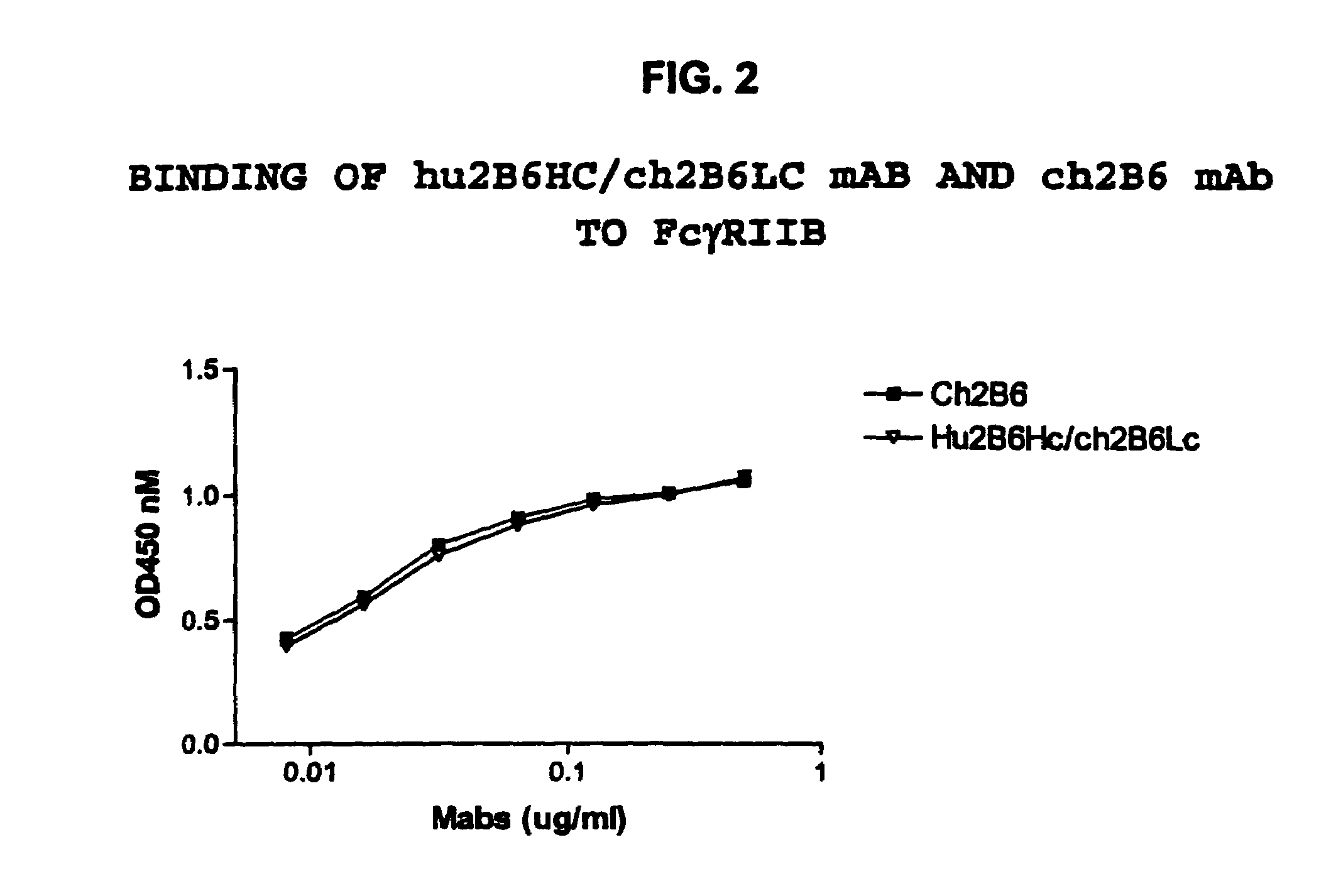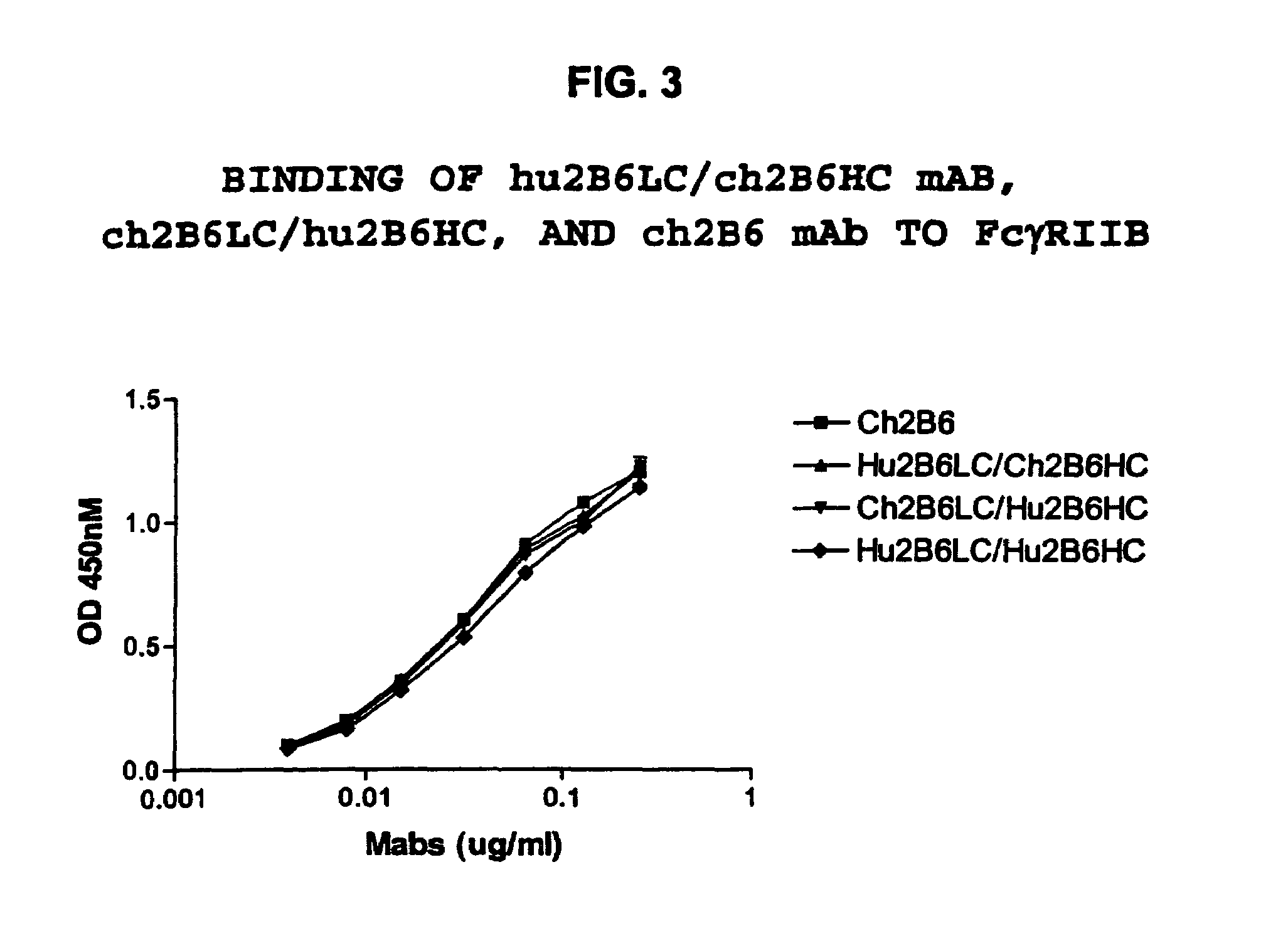Humanized FcgammaRIIB-specific antibodies and methods of use thereof
a technology of fcgammariib and specific antibodies, which is applied in the field of humanized fcriib antibodies, can solve the problems of increasing destruction, affecting the effect of cellular responsiveness, so as to enhance the effector function and enhance the therapeutic effect of current methods
- Summary
- Abstract
- Description
- Claims
- Application Information
AI Technical Summary
Benefits of technology
Problems solved by technology
Method used
Image
Examples
experiment 2
[0402] Transfections of HEK-293 cells were performed using the following combinations: hu2B6HC / hu2B6LC, hu2B6HC / ch2B6LC, ch2B6HC / hu2B6LC and ch2B6HC / ch2B6LC. After three days in culture the amount of human IgG expressed was quantitated by ELISA using the protocol described above. Binding to dimeric soluble FcγRIIb-Fc was then determined by ELISA. The results of this experiment, depicted in FIG. 3, indicated that all of the mAbs bound to the receptor with similar affinity. FACS analysis was then performed using the protocol described above to measure the binding of the mAbs to Daudi cells (Table 7). The results indicate that hu2B6HC / hu2B6LC mAb binds to this human B cell tumor line with the same affinity as the ch2B6 mAb.
[0403]
TABLE 7Primary AntibodyConcentration (ug / ml)Mean FluorescenceHuman IgG10.5 6.070.1N / A0.02N / ACh2B60.5551.520.1514.690.02168.17Hu2B60.5628.820.1618.130.02228.74
6.3 Generation, Expression and Binding of Hu2B6LC Variants
[0404]There is a consensus sequence of N-glyc...
PUM
| Property | Measurement | Unit |
|---|---|---|
| affinity | aaaaa | aaaaa |
Abstract
Description
Claims
Application Information
 Login to View More
Login to View More - R&D
- Intellectual Property
- Life Sciences
- Materials
- Tech Scout
- Unparalleled Data Quality
- Higher Quality Content
- 60% Fewer Hallucinations
Browse by: Latest US Patents, China's latest patents, Technical Efficacy Thesaurus, Application Domain, Technology Topic, Popular Technical Reports.
© 2025 PatSnap. All rights reserved.Legal|Privacy policy|Modern Slavery Act Transparency Statement|Sitemap|About US| Contact US: help@patsnap.com



